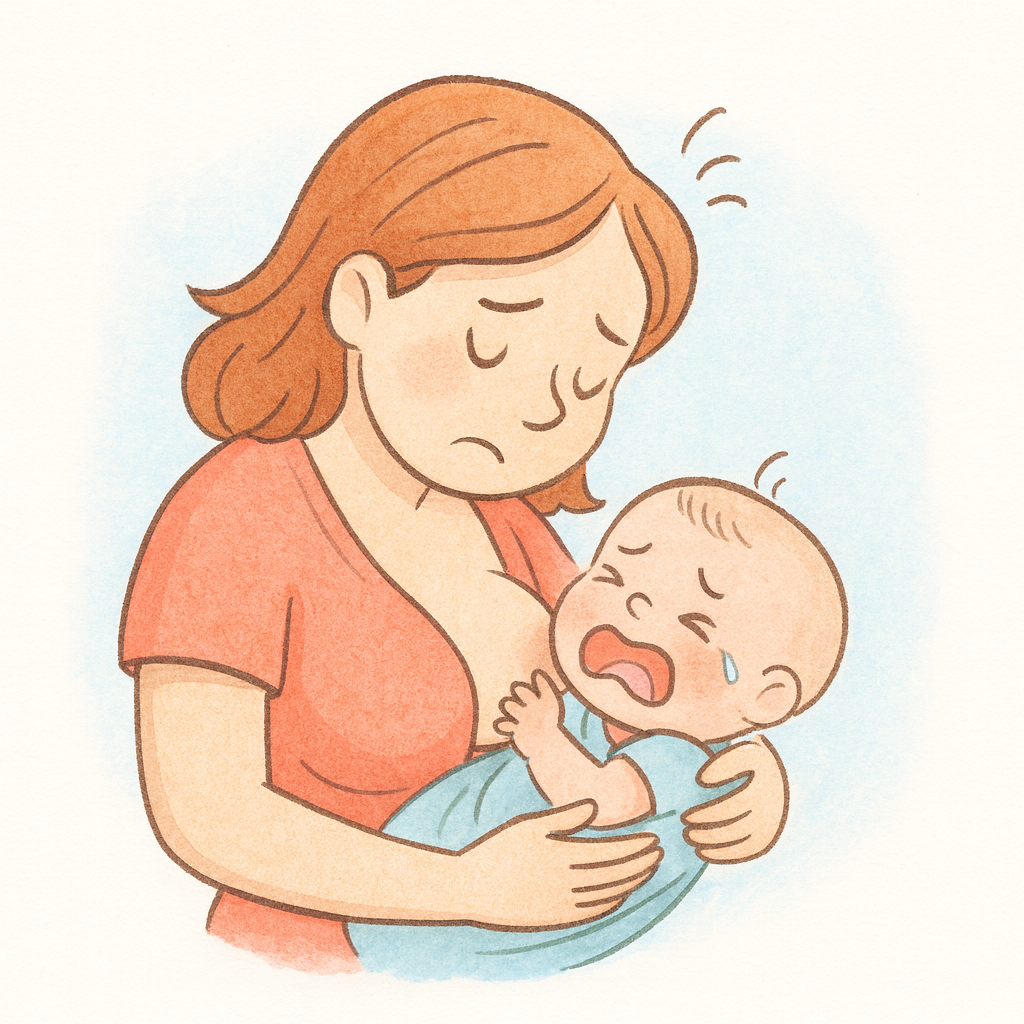In recent years, you may have heard more often that when a breastfed baby is given a pacifier or a bottle, they can develop what experts call nipple confusion. This means that the baby partially or completely rejects the mother’s breast and refuses to nurse.
Symptoms of Nipple Confusion
The signs of nipple confusion can vary widely. Some babies still nurse, but only as long as the milk flows easily. Once the initial milk is gone and they need to work harder, they may angrily let go and cry. Other babies refuse the breast entirely after being given a bottle or pacifier.
Why Does This Happen?
The cause lies in what’s known as oral imprinting. This is the natural process that ensures a baby prefers the mother’s breast over any alternative. For imprinting to develop properly, it’s best to avoid pacifiers and bottles in the early weeks. If a baby first becomes accustomed to these, they may start to prefer them – much like how a duckling will follow the first moving object it sees, even if it’s not its mother.
Babies also form emotional attachment to what they imprint on. Comfort nursing plays an important role here. The more time a baby spends at the breast, the stronger the attachment will be.
Because this process develops over time, many experts suggest that if parents want to offer a pacifier, they should wait until at least after the first month. Still, even then, many babies become confused by pacifiers and bottles. This happens partly because:
- The baby spends time sucking on a pacifier instead of comfort nursing, and may become more attached to the pacifier.
- Drinking from a bottle requires a very different sucking technique than breastfeeding. Milk or formula also flows more easily from a bottle, so babies may no longer want to work as hard for milk at the breast.
Does Every Baby Get Nipple Confusion?
Not every baby who uses a pacifier or bottle will develop nipple confusion. But because it’s impossible to predict which baby will, it’s best to minimize the use of pacifiers and bottles, or avoid them entirely when possible. Studies show that babies who use pacifiers regularly tend to stop breastfeeding earlier than those who don’t.
What to Do If Nipple Confusion Develops
Overcoming nipple confusion takes patience and persistence, but it is possible to get babies back to the breast.
- Gradually reduce pacifier use and replace it with comfort nursing.
- Keep your baby close: skin-to-skin contact, babywearing, rocking, and even feeding while rocking can help.
- Try different breastfeeding positions.
- If supplementation is necessary, use breastfeeding-friendly alternatives such as a cup or an SNS (Supplemental Nursing System).
Sometimes nipple confusion resolves in just a few days, but it depends on how long and how often the baby has used pacifiers or bottles.
Professional Support
A certified lactation consultant can provide guidance and support to help overcome nipple confusion and restore breastfeeding.



